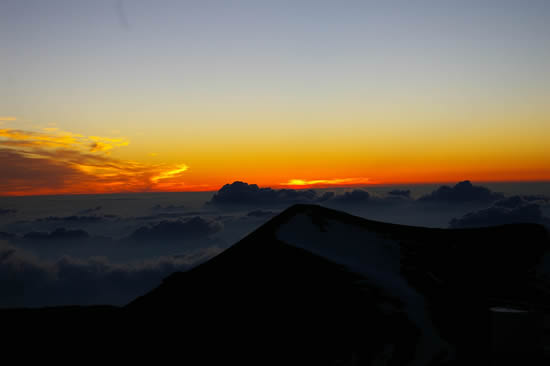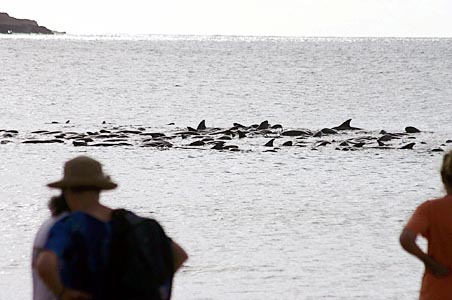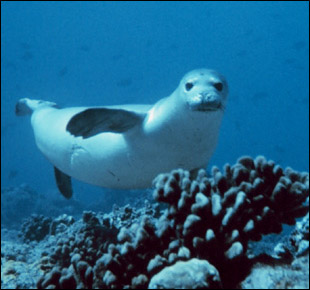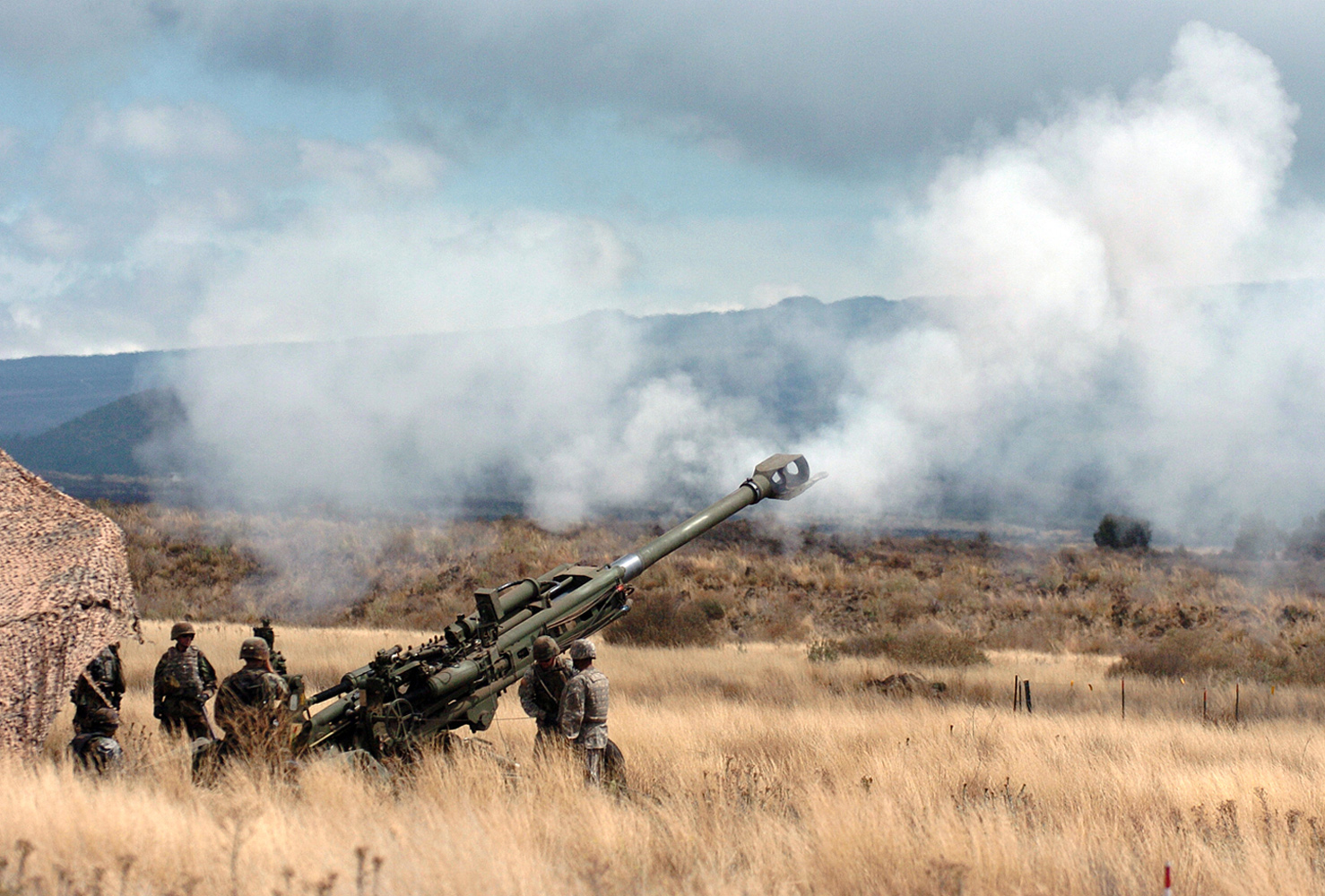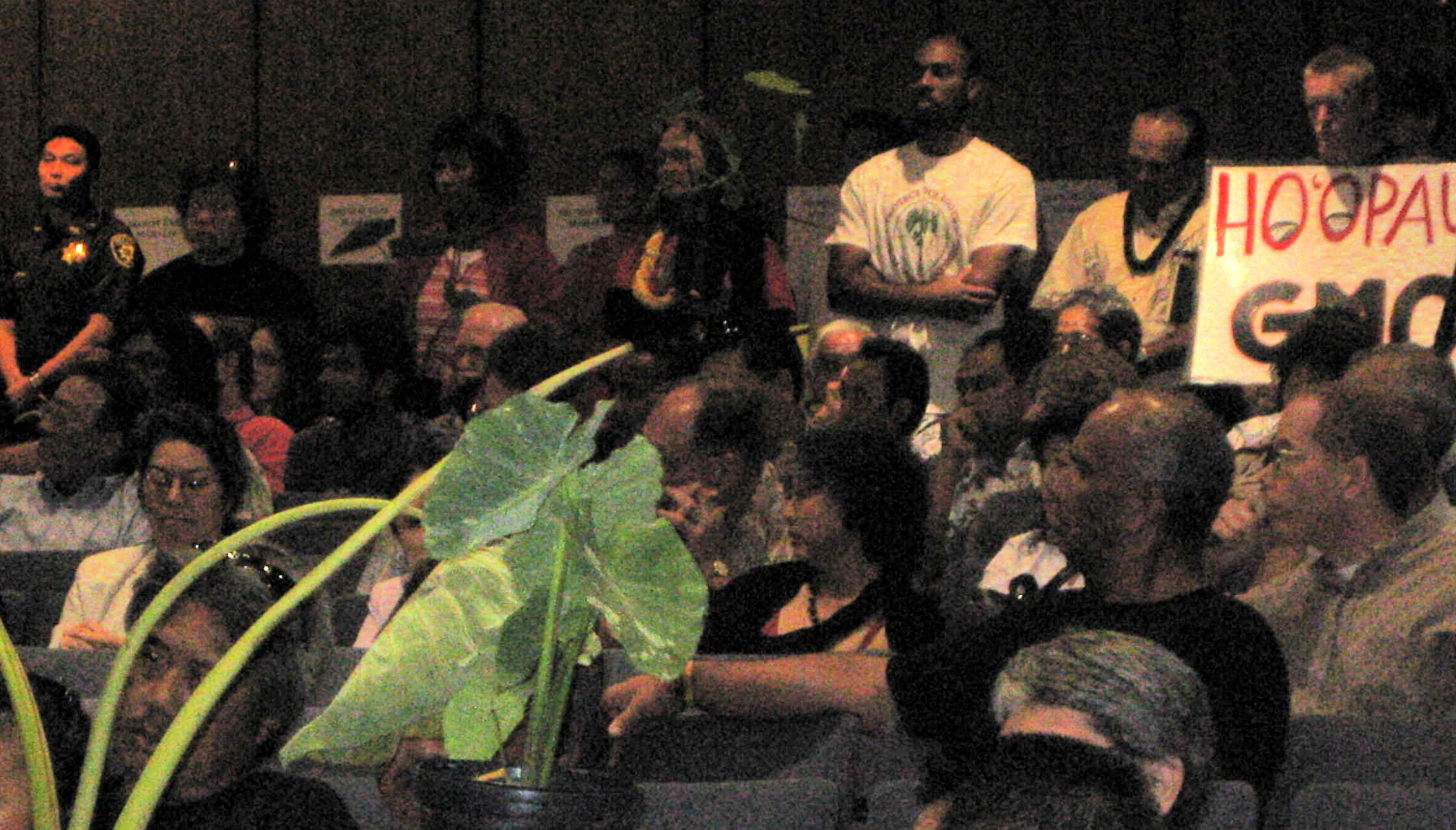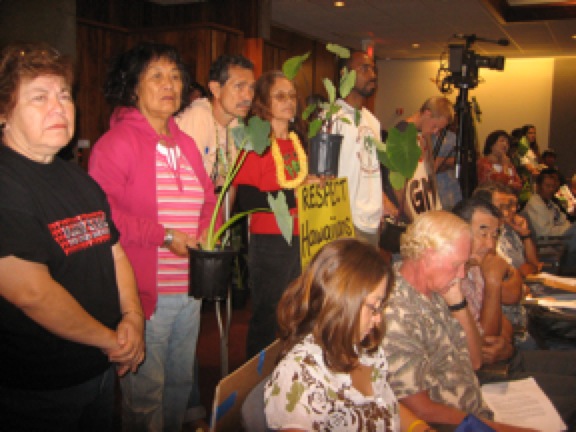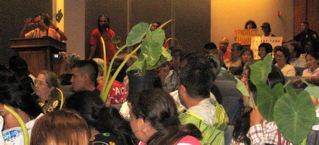Blog
News, updates, finds, stories, and tidbits from staff and community members at KAHEA. Got something to share? Email us at: kahea-alliance@hawaii.rr.com.
What a month for the mountain...
All in the same month! (The good, the bad, and the ugly):
- The “Na Kupuna Council O Moku O Keawe”, the Association of Hawaiian Civic Clubs and the Mayor-Elect for Hawaii Island came out in support of protecting Mauna Kea from uncontrolled telescope construction. (Maika’i!)
- Proponents moved forward with plans to seek the construction the new, massive Thirty Meter Telescope proposed for Mauna Kea, despite the fact that there is NO court-mandated mangement plan in place to protect cultural and environmental resources of the mountain. (Bad)
- The Land Board agreed to hand-over management authority of the Natural Area Reserve on Mauna Kea to the proponent of all the telescope construction on the summit: The University of Hawaii. (Ugh. Lee.)
On this last item, over 400 of you submitted letters to the Land Board opposing this give-away.
But with glossy photos of the sacred summit and empty promises to better protect the unique resources of the summit, the University’s self-appointed advisory group called the “Office of Mauna Kea Management” lulled Land Board members into believing the University has the expertise and motivation to protect the Natural Area Reserve on Mauna Kea.
The community knows better. The University’s presence on the summit has only led to 40 years of over-development, loss of native habitat, and interference with traditional cultural practices.
The Reserve should not be managed by the University in any way. The mission of the Mauna Kea Reserve is to protect the natural and cultural resources of the area, which is in direct conflict with the University’s mission to expand telescope activities on the summit. In fact, the Reserve was established and removed from the University’s control in 1981 precisely because the significant resources there needed more protection from the University’s telescope construction.
The Reserve on Mauna Kea protects a unique and threatened mountainous desert habitat and Hawaii’s only alpine lake, Lake Waiau. The Reserve includes the largest adze quarrry in the Pacific, ancient and modern burials, and Queen Emma’s shrine. These are public trust lands–Hawaiian lands held by the state in public trust for the people of Hawaii. Protecting this area needs management by experts in land conservation and cultural resources, not telescope construction.
The University has an appalling record of protecting resources while it constructed over 50 telescope and support structures on Mauna Kea. A 2005 EIS confirmed that the cumulative impact of 30 years of telescope activity on the cultural and natural resources of Mauna Kea has been “substantial, adverse and significant.” And this trend continues today, despite the mantra there is “a new management paradigm” on Mauna Kea. Just as it has done many times before, the University is currently pushing to draft a management plan on its own terms, not the community’s, while at the same time entertaining the construction of a new massive telescope on the last pristine plateau of Mauna Kea.
The University has long sought more direct control over the mountain to further its long-standing financial interest in developing the summit for telescopes. This week, the Land Board’s decision brought the University one step closer to consolidating its control over the summit.
But there are many opportunities coming up to reign in the University and telescope activity on Mauna Kea. Stay tuned to help out in the effort to uphold the protections already on the books for Mauna Kea. In January, we expect the University to once again seek the Legislature’s approval to change the law to allow continued telescope expansion on the summit. The University has tried and failed many times before to command complete control over the summit, but each time the community has successfully educated decision-makers on good policy-making and upheld the protections for Mauna Kea.
Let’s get ready to do it again this year!
self help: restoring stream flow.
From Alan Murakami of the Native Hawaiian Legal Corporation, on behalf of East Maui Taro farmers and Na Moku Aupuni O ko`olau Hui:
Background. The law provides for various appropriate remedies for dealing with and managing serious conflicts over uses of stream water. The biggest conflicts over stream water uses have festered for years because of the massive diversions of East Maui streams by East Maui Irrigation Company for decades. EMI diverts as much water for its plantation uses in central Maui as the average amount that all of O`ahu consumes. The biggest conflict involves the water EMI is taking illegally from streams that feed taro patches and support native stream life vital to the preservation of Hawaiian traditional and customary practices in the cultural landscapes of Wailuanui and Honopou Valleys.
State Agency Delays. After 7 years of patiently waiting for the implementation of the appropriate administrative remedies theoretically available to it, Na Moku Aupuni O Ko`olau Hui’s leadership has been repeatedly frustrated by the inaction of both the Board of Land and Natural Resources and the Commission on Water Resources Management in performing its public trust functions designed to protect the public interest and the water rights of East Maui taro farmers and subsistence gatherers.
Those functions are based on the presumption that these agencies will respect and enforce clear law on water rights held by these farmers and gatherers, which are explicitly protected by the Hawai`i Constitution, the state Water Code, and a long line of water case law. These laws not only respect these practices of these cultural practitioners, but provide the basis for demanding that EMI demonstrate the ABSENCE of injury to these practitioners BEFORE diversions are allowed. Despite holding all the legal advantages of these laws, the BLNR and the Water Commission have delayed, without explanation or justification, the timely implementation of these laws, leading to chronic and severe cultural and monetary damages amongst farmers and gatherers trying to enforce their rights.
Frustration. For example, the CWRM has, without explanation or legal justification, delayed action on Na Moku’s pending request to restore stream flows to support constitutionally protected water rights of taro farmers and subsistence gatherers since 2001, although the governing statute demands action within 6 months. Similarly, like its sister agency, the BLNR has allowed EMI to continue diversions from East Maui without regard for these same farmers and gatherers, even after a year since it supposedly acted to direct its staff to protect the water rights of those affected. The DLNR has failed to fully implement the year-old order of the BLNR, which was designed to provide farmers immediate interim relief from the effects of the existing EMI diversions.
Self Help. On July 9, 2008, taro farmers observing water being improperly diverted from Wailuanui Stream unilaterally released water from EMI diversions. The affected practitioners could not wait any longer, having suffered failed taro crops due to insufficient irrigation water, while EMI diversions took the water that would have savedand supported their crops. This exercise of their constitutional rights did not follow the procedure outlined in either agency’s timetable for action.
Nevertheless, the releases from EMI’s diversion works are entirely consistent with the continuation of traditional and customary practices followed by their ancestors for growing taro and gathering from the streams. It is just that the BLNR and CWRM did not, and apparently chose not to, promptly protect the superior water rights of these practitioners as the law would otherwise require. Their failure to timely implement the law directly resulted in the level of frustration felt by all practitioners in East Maui who have attempted to patiently wait for the water to which they are entitled in the affected streams.
Na Moku position. The taro farmers and subsistence gatherers who took this unprecedented action in the midst of the delayed proceedings did so without prior approval of Na Moku. Na Moku has continued to make itself available to state agencies, in all available administrative processes, in efforts to seek the orderly restoration of streams illegally diverted by EMI. However, it cannot and does not condemn the unilateral releases of water into the streams last week by taro farmers frustrated by long, and unexplained, delays by state agencies. After all, tenants of an ahupua`a do have the reasonable right to access areas within the same ahupua`a to continue their traditional and customary practices, including taro growing and subsistence gathering.
Na Moku affirms its belief that these releases reflect the reasonable and overdue exercise of these rights, protected under the Hawai`i Constitution, statutes, and case law, with which responsible state agencies cannot and should not interfere. This responsibility for this resort to self help rests entirely with the BLNR/DLNR and the CWRM. Na Moku and the taro farmers who are now acting are all frustrated by these agencies failure to act timely enough to save their taro crops. Moreover, successful taro farmers contribute heavily to enhancing Hawai`i’s food supply, its food security and long-term sustainability. Each agency should not exacerbate building tensions by any heavy-handed means to reacting to these farmer actions. The farmers are only reacting to belated processes each agency has not timely nor properly implemented.
In the spirit of moving forward in this unprecedented circumstance, Na Moku stands ready to cooperate with the CWRM and the BLNR/DLNR to continue any reasonably prompt process to assure that the rights of its members are respected and timely enforced.
Bombs Away! RIMPAC's Back
From Marti:
RIMPAC officially started on Sunday, meaning you can expect beach closures, random explosions, mass strandings, and displays of excessive military force throughout the month of July in Hawaii. Remember, RIMPAC is the bi-annual demonstration of U.S.-occupation that brought us the “Hanalei Bay Incident” in 2004, when 150 melonhead whales attempted to strand themselves because of the Navy’s use of high-intensity active sonar AND the unexplained nearshore explosion that shook the windows of Ewa Beach residents on Oahu in 2006.
This year we can look forward to 150 vessels and 20,000 troops from U.S.-backed militaries — like Russia, South Korea, Australia, Japan, and Peru — engaged in all kinds of wargames, such as assault landings, target practice with live rounds, and high-intensity active sonar.
To move forward with these (and all) exercises as originally outlined in the Navy’s giant range expansion plan, the Navy had to do *something* about the pesky limitations placed on those exercises by the State of Hawaii under the Coastal Zone Management Act (CZMA). This federal law was passed to encourage coastal states to do more to protect their precious coastal resources, including giving these states unique authority to require federal agencies abide by state coastal protections.
Under this unique federal law, the State of Hawaii said the Navy had to do two very reasonable things related to active sonar:
1. In nearshore waters, don’t let the active sonar go above 145 decibels because this is widely accepted (even by the Navy) to be a safe level for marine mammals and humans;
2. In all other situations, abide by the conditions required by Judge Erza in the Federal District Court.
It’s not just that the Navy said “No, we don’t have to follow your stinkin’ coastal protections,” but that the Navy enlisted other government attorneys to say “no” for them in a way that would have undermine all of the cooperative state-federal partnerships set up to protect U.S. coastal resources.
I say “would have” because the legal opinion the Navy ended up with is so poorly argued that it probably won’t have much affect. Of course, it will probably take more court action at some level to sort that out.
The two basic reasons why the Navy’s legal game of Twister fails is:
1. It relies on a court opinion that was vacated, meaning the judge revisited her decision and changed her mind based on new evidence or arguments.
2. The new argument that changed the judge’s mind was that the Endangered Species Act actually says states do, in fact, have the authority to protect endangered marine species to greater extent than the federal government. And it’s well accepted that the Endangered Species Act trumps the Marine Mammal Protection Act when it comes to endangered marine species.
Sigh.
We’ll continue to keep you updated on this saga. In the meantime, you can send your thanks to the State Planning and Director Abbey Mayer for standing up for coastal protections in Hawai`i nei.
Hawaii County Council to Consider DU Cleanup Reso
The military finally admitted in 2006 that depleted uranium (DU) spotting rounds for the Davy Crockett nuclear weapon system have been used at Schofield Barracks, the Pohakuloa Training Area, and possibly Makua Valley between 1962 and 1968.
The Army long denied ever using DU in Hawai‘i; reassuring residents in countless public hearings and environmental impact statements that “a records search for depleted uranium rounds was conducted and determined that these types of munitions were never part of the Army’s inventory in Hawai‘i… .”
The U.S. military has an obligation to be candid with the public about its activities in Hawaii because they have far-reaching implications for our health and welfare. The people of Hawaii will be left to suffer the consequences of U.S. military activities long after they have moved on to other fronts. That is why we must be vigilant and demand answers to our questions: Have other DU spotting rounds and the more hazardous DU armor penetrating rounds been used as well? What don’t we know about existing military contamination? What should we know before we even begin to consider pending expansion of live fire activities?
From friends on the Big Island:
The Hawaii County Council will be hearing Resolution 639-08 Urging the U.S. Military to address the hazards of depleted uranium (DU) at the Pohakuloa Training Area (PTA). The hearing is set for Wednesday, July 2nd 8:30 AM at the Council room on the 2nd floor of the Hilo Ben Franklin building.
You can support by submitting this letter to all Hawaii County council members, urging their support of resolution 639-08.
A growing number of people feel it is time to stop all live-fire and shut down PTA and get to the root of the problem. Stopping all live-fire at PTA is a key public safety and environmental conservation issue. Any live-fire training increases the risk of spreading the radiation contamination. There needs to be a thorough independent assessment and clean-up of the existing contamination before live-fire training can even be considered!
Unfortunately, Council Chair Pete Hoffmann has already prepared an amendment to delete the call for a complete halt to all live firing at PTA which is the heart of the matter. Don’t let this happen!
“… Just as smoking affects the primary user as well as those inhaling second hand smoke, the airborne products of DU burning remain suspended for long periods and travel great distances in the atmosphere. We do not know all the toxicity of the airborne DU products (nano-toxicity) but some forms (DU oxides) we do know can persist in the body for decades. When internalized DU emits the most dangerous type of radiation, alpha radiation. Animals with implanted alpha emitters have shown high cancer rates and birth defects – which can pass on to subsequent, UNEXPOSED generations.
- Lorrin Pang, MD, MPH (speaking as a private citizen). Dr. Pang was born and raised in Hawaii, and is Retired Army Medical Corp, Best Doctors of America list 2006-8, Consultant to the World Health organization (WHO) since 1986, Consultant Glaxo Smith Kline
Take Our Advice, No Be Hard Head
From Marti:
Like everybody else, we’ve been watching the news coverage about the closing of Molokai Ranch. We’ve seen how the corporation has tried to spin this event to throw blame at the community for opposing the La‘au Point development. The same tactic was tried with Superferry. But, I gotta say, it still ain’t working.
It is not the community’s fault when a corporation has a bad idea, sinks a whole bunch of money into it, and it fails. When somebody says “ah, this isn’t gonna work, don’t do it,” but a corporation goes and does it anyway… that’s called hard-head.
To see how hard head this corporation is… and how resilient the people of Molokai are, take a look at this list of news coverage & commentary compiled by Molokai residents.
La’au Point Residents Not At Fault by Lee Cataluna
http://www.honoluluadvertiser.com/apps/pbcs.dll/article?AID=2008803280357
Karen Holt and Todd Yamshita were on KGMB 9 new this morning talking about the Ranch shutdown, the closure of access, buying the Ranch, and windfarms.
http://kgmb9.com/main/content/view/5093/108/
Maui News Articles
Future of proposed project at Laau Point is unclear
http://www.mauinews.com/page/content.detail/id/501866.html?nav=10
Residents resolve to move on
http://www.mauinews.com/page/content.detail/id/501867.html?nav=10
Star Bulletin Editorial/Articles
‘Mothballing’ Molokai Ranch would be devastating
http://starbulletin.com/2008/03/26/editorial/editorial01.html
Molokai parent calls isle unit ‘cash positive’
http://starbulletin.com/2008/03/26/business/story01.html
Molokai Ranch’s imminent closure brings uncertainty
http://starbulletin.com/2008/03/26/news/story02.html
Honolulu Advertiser Articles
Ranch’s fate determined by billionaire
http://www.honoluluadvertiser.com/apps/pbcs.dll/article?AID=/20080326/NEWS01/803260431
Molokai Ranch closure leaves bleak prospects
http://www.honoluluadvertiser.com/apps/pbcs.dll/article?AID=/20080326/NEWS01/803260433
Molokai Ranch timeline
http://www.honoluluadvertiser.com/apps/pbcs.dll/article?AID=/20080326/NEWS01/803260432
Some legal mana’o/analysis on recent Water Decisions from a Save La’au attorney:
“Three recent decisions need to be understood. First, in September 2007, the Attorney General finally concluded that the State could not lease the MIS to MPL until an environmental assessment is completed.
Second, on December 26, 2007, the Hawai`i Supreme Court vacated the Commission on Water Resource Management’s permit to withdraw and use water from Well #17 for the West End of Moloka`i. In the Matter of the Contested Case Hearing on the Water Use Permit Application Filed by Kukui (Molokai, 174 P.3d 320; 2007 Haw. LEXIS 381 (2007) (Kukui).
Third, on December 14, 2007, Maui County enacted a new ordinance (Ordinance #3052) that requires verification of water supply before subdivision is approved. MCC 14.12.040 and 18.04.020(G)…no permitted allocations from Well 17. At this point, MPL has neither the right to use Well 17 water, nor the right to transport water using the MIS….
The bulk or “piecemeal” sale option and the agricultural subdivision option present inaccurate information. These lots cannot be subdivided into more than 1500 – or even 215 plus 223 – lots. Ordinance 3502 (2007) would not allow this to occur because there is no water source available for these lots. Moreover, MPL over-estimates its ability to sell any of the parcels of land given the fact that it currently has no guaranteed water source for any of its lots. No buyer would purchase a lot on the dry West End without any assurance of a water source.
It is unfortunate that MPL has misled GuocoLeisure and its shareholders regarding the value of MPL’s land. Not only was the Hallstrom Group’s valuation inaccurate when it was made, but the three recent decisions (the Hawai`i Supreme Court’s in Kukui, the Department of the Attorney General’s regarding the MIS, and Maui County in the new subdivision ordinance) make it abundantly clear that 1) MPL has no guaranteed source of water to develop its lands and 2) the lands cannot be easily subdivided. MPL’s land is worth far, far less than MPL claims.”
See the Historic Movement to Save Haloa
A hearing was held March 19, 2008 to protect Hawai’i's ancestor and native crop – taro – from genetic modification and patenting. 6,000 people submitted written testimony in support. 8 hours of verbal testimony were given.
Now, the legislators need to pass this bill. Help them make the right decision. Click here to get involved.
Images from the hearing on SB 958:
http://maoliworld.ning.com/profile/Naalehu (click here to see more of Na’alehu’s pics)
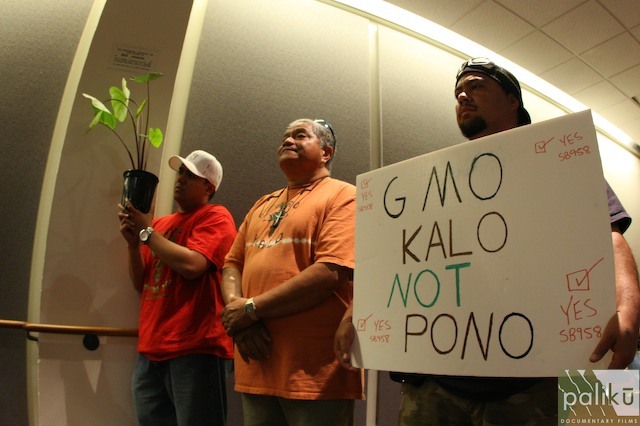
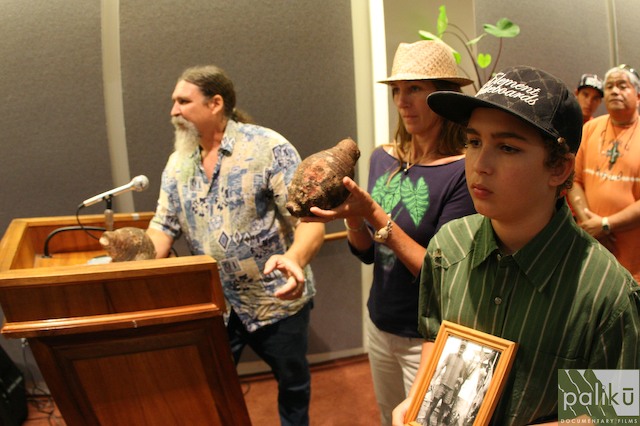
from KAHEA:
6,000 & growing...
from Marti:
Here is a letter that was published today in the Honolulu Advertiser (one of the few so far):
GENETIC MODIFICATION
CHANGING KALO ERODES HAWAIIANS’ LIFELINE
My mother used to serenade me with songs about exotic places. Travelogues of oceans, forests and island sweethearts. This is how she passed on knowledge. Songs reflecting simpler times and storytellers of the past. Our people were more disconnected than ever. Being Hawaiian was not popular. So to sing her aloha was her moment of self determination.
Her spiritual integrity impressed upon me indigenous ways of knowing. “Leave that popolo berry! It wants to grow there.”
If someone was to have told her she could no longer share limu among her classmates without a permit she would have sighed, “That’s why we going die out.” But she would respectfully accept it. She felt people saw her particular relationship with the ‘aina as peculiar.
Replanting kalo is the living lifeline that holds the stories of our past. Changing the genetic makeup of kalo will erode that lifeline.
Hawaiians are now re-establishing their priorities in maoli culture. A moratorium on varieties of maoli kalo and introduced kalo as specified in SB 958 is needed for more reasons than just keeping steroid-like pumped up food off our tables.
It’s needed so we can pass on to our keiki more than just “stones.” We can pass on the story of Haloa.
-Meala Bishop
Waiahole kalo farmer, Kane’ohe
To submit testimony on the protection of taro, click here.

